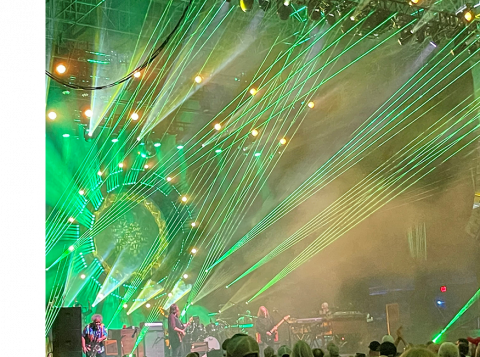Audience Scanning and "FW Peak" Mode

Blue Oyster Cult was a pioneer in using laser light in their shows in the mid-1970s. Some of the visual effects included aiming a fiber at a mirror ball and showering the audience with its reflection, and pointing the laser at the lead guitarist’s guitar, who would then reflect the raw, powerful beam all over the audience. This spectacular show wowed both the audience and the band. That is until OSHA came in and shut the use of lasers in their show down.
Fast forward 45+ years and laser light shows are part of virtually every live performance show, immersing audiences in a sea of light.
So what has changed in the four decades since Blue Oyster Cult’s pioneering days? Today the laser light is spread out, “diverging” the powerful raw laser over a wide area in space. This practice, combined with careful pre-testing of the levels that the audience will be subjected to during the performance, has resulted in safer shows with few reported incidents over the decades.
Nonetheless there are still concerns about potential safety issues as well as under-reporting of incidents. One such incident happened at a Boston venue in 2019 where a teenage girl left a laser light show in 2019 complaining of watery eyes and blurry vision. “The light was blinding” she reported.
When it comes to laser eye safety, continuous monitoring is the best approach to protecting the audience as this technology becomes more sophisticated and prevalent. As a result of these concerns, Mean Permissible Exposure (MPE) recommendations have emerged. See references here (laser safety wiki), here (audience scanning wiki), and here (ILDA guidelines). The last of these references recommends a maximum power level of between 2.5mw/cm2 and 100mw/cm2, depending on the circumstances.
The ILT radiometers can be run in “FW Peak” (firmware peak) mode to detect momentary peaks in laser power lasting less than 1ms. As such, combined with expert know-how and application, these meters become a valuable tool for monitoring audience scanning safety both pre-show during setup and during live shows to detect any potential issues.

